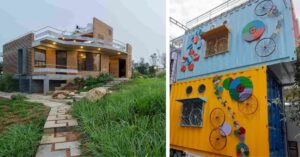Want a Low-Cost, Green & Gorgeous Office? Award-Winning Architect Makes it Happen!
The building sports a 100 per cent rainwater harvesting system and a grey-water recycling option, while solar energy use is planned for the common areas.
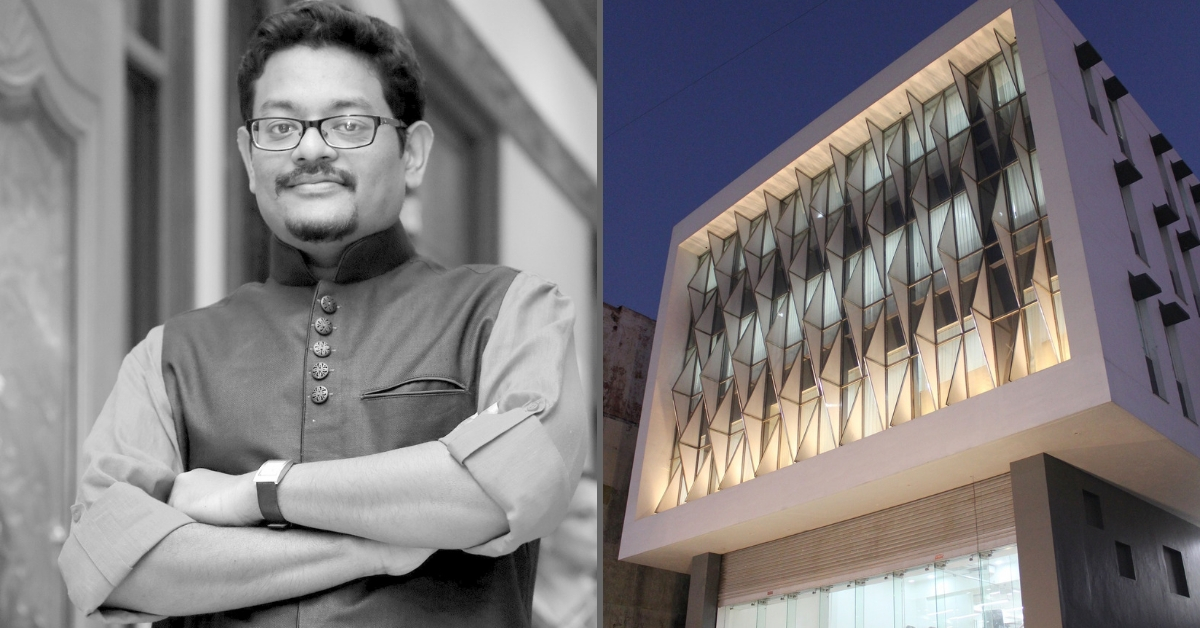
What business centre can an architect deliver with a modest construction budget and a small parcel of land?
It turns out quite a lot.
With Rs 1,200 per square foot towards construction costs, Chennai-based architect V S Vigneswar designed a building that became a hit with its corporate occupants, had a sustainable design that saved them around ten per cent of the energy costs metered by similar buildings in the area–plus, a handful of awards.
Studying architecture at CEPT University, Ahmedabad, and Masters in Architecture at TU Delft, The Netherlands, Vigneswar, observes, “What defines my work is my commitment to adding value to built spaces through sensible design.”

Most commercial buildings in cities like Chennai, especially the smaller ones, look mundane because the limited ground space doesn’t allow an aesthetic architectural design, or ends up getting Aluminium Composite Panels (ACP) on its street-facing walls to get a sleek appearance.
But the problem is that such panelling traps heat into these buildings, which in turn, brings about huge electricity bills for air conditioning.
In a hot city like Chennai, this is beyond foolish, but unfortunately, this has become a trend. In contrast, Arcot Plaza is a simple, unpretentious and sensible building, with sound economics behind it.
Spanning a built area of 20,000 square feet, it is a small, sustainable business centre that addresses user comfort and aesthetics, working with Chennai’s notorious sunshine, rather than against it.
This building won the Bronze Award in the Architecture Category of the A’ Design Award & Competition held in Italy earlier this year for the “Value-Addition provided through Good Architectural Design”. This is arguably the world’s largest design competition, awarding designs, design concepts, products and services.
The building also bagged the Best Commercial Project Award at the Festival of Architecture and Interior Design 2017 in Mumbai and was judged the winner in the commercial category at the Delhi Architecture Festival 2017.
So…how did this come to be?
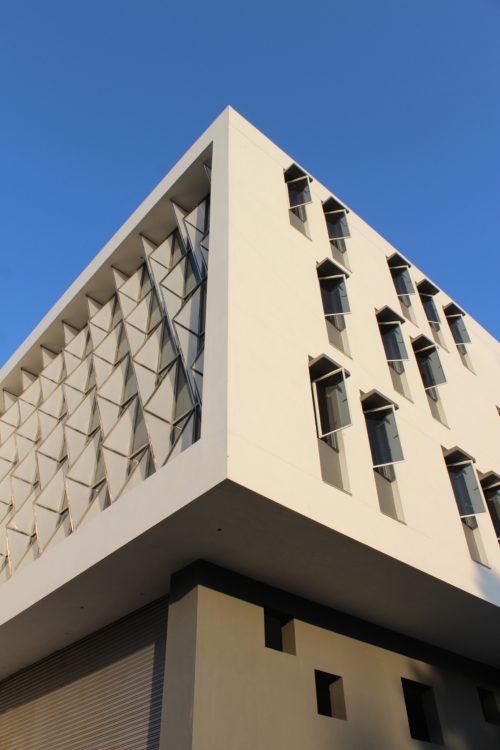
Awards were the last thing on this client’s mind. The brief given by the client to V S Vigneswar was simply: “Maximise the revenue potential of the site and attract ‘corporate’ tenants (banking sector already visualised!) through a design that stands out and involves a low operating cost.”
The architect decided to go local, right down to the street. The site was on an arterial road in the heart of Chennai, so Vigneswar decided to open the building to the streets, rather than wall it in.
The site, a small plot of land measuring 7,620 square feet has its shorter side (21.5 m) facing the street. This didn’t give him much space to create a complex design.
So Vigneswar decided to open up the building with an imposing double height patio adjoining the ground floor and mezzanine floors, with glass panes as the street-facing northern wall.
From the perspective of the building’s user, the patio serves as a common lobby space for the ground and mezzanine floors, a space-saving feature that corporate clients would love. The upper floors have an independent entry through a driveway towards the centre of the building.
Continuing with the glass frontage of the ground and mezzanine floors for the rest of the floors, rather than a concrete façade overlaid by heat-trapping panels, he gave the building’s street-facing side a solar-rated glass frontage. With this, cost-free day-lighting for the workspaces was achieved, Chennai being a city where heat and light are in surplus.
To cut off excessive solar heat falling on the glass and the associated glare, he structured shading devices in the form of triangulated translucent polycarbonate fins in a designed pattern, the fins projecting perpendicular to the facade.
At night, when all is lit up, the fins reflect the interior lighting of the building in intriguing geometric patterns… an attention-grabbing façade achieved at virtually no cost!
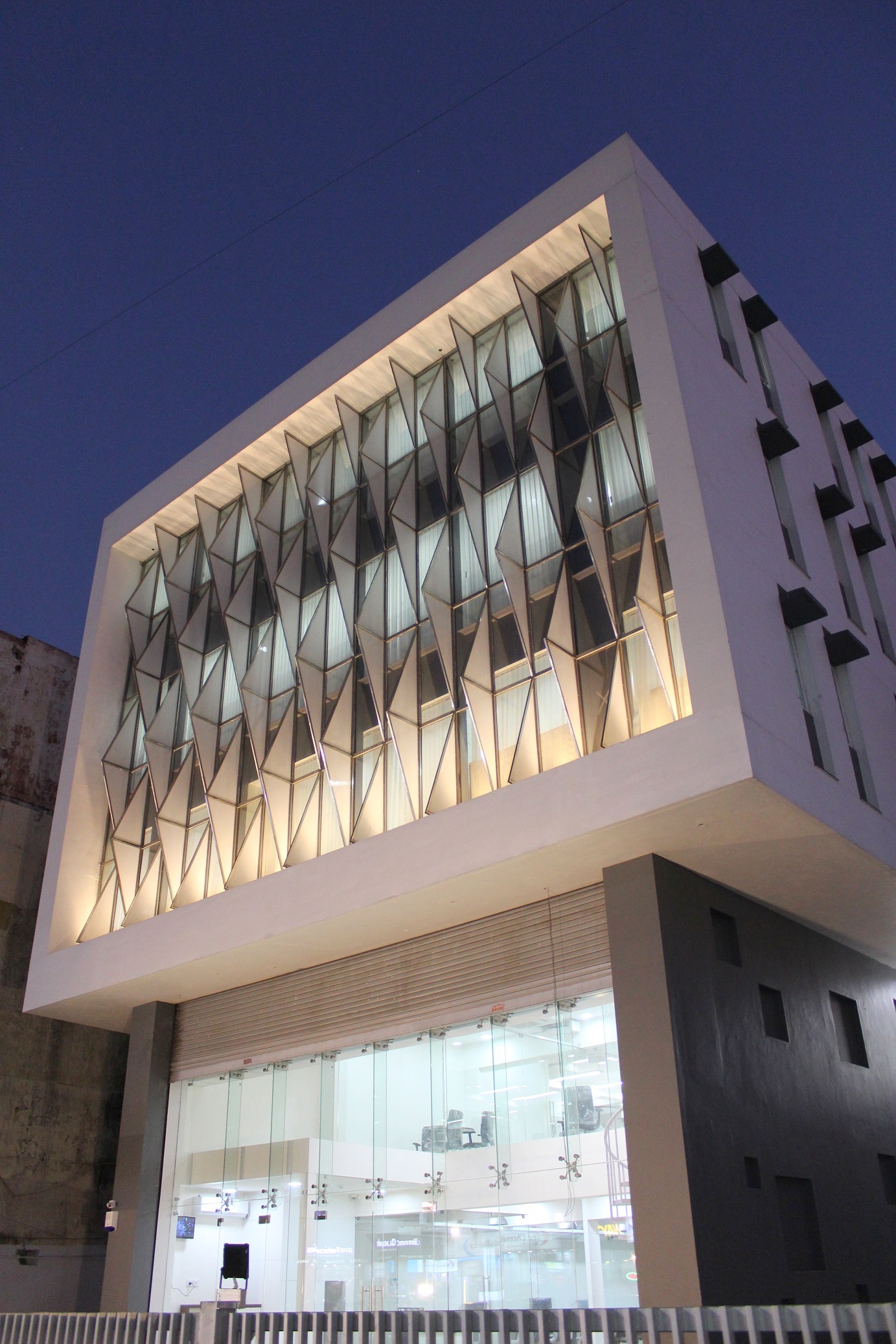
“In Chennai, during summer, the setting sun moves northward. During such months, the fins provide diffused light. During other times, they cut the glare from the bright sky. It also offers an interesting view to the street from the office spaces breaking the monotony of the spaces,” says Vigneswar.
He continues, “While meeting the tight budget was the primary challenge, the other was in convincing the client that this kind of a building would be economically and commercially viable.”
Also Read: This Man Quit the Corporate World to Embrace Indigenous Architecture and Build Eco-Friendly Homes
For instance, most small multi-tenant commercial buildings have concrete front walls on which the firms flaunt their signage. Arcot Plaza’s glass facade doesn’t allow this. So, Vigneswar created space for displaying signage on the driveway’s entrance arch.
Further, the building’s side walls having been constructed with insulating AAC Blocks and recycled cement mortar, minimise heat gain from the hot Chennai air.
What about ventilation?
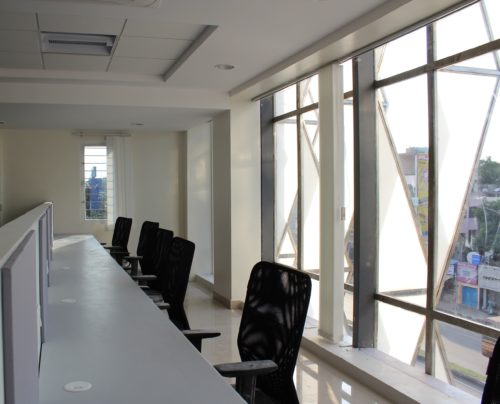
For this, he tried a variation of the traditional architectural design element ‘kaatrupandal’ meaning ‘wind tunnel’ in Tamil.
But he did this without constructing a tunnel, simply by giving larger window openings on the eastern walls and narrower slit-window openings on the western face of the building, which limits the harsh western light and creates a pressure gradient that sucks in Chennai’s south-west wind, creating a natural breeze.
All the utilities have been relegated to the building’s posterior face, i.e., its southern face. No unsightly AC or other ducts can be seen on the building… Vigneswar simply ran the ducts through the ceiling beams and led them to the services area at the building’s posterior, where the utilities find a place on exposed steel structures, easy to access and maintain.
And of course, the building sports a 100 per cent rainwater harvesting system and a grey-water recycling option, while solar energy use is planned for the common areas.
So then, with the building’s “A’ Design Award” tag in mind, if you had been looking for some funky out-of-the-world appearance, you will be in for a disappointment. Frankly, there isn’t anything spectacular about this building. What makes it superlative is its sound sense.
There is a misconception in society that design is expensive and that contractors can do the job of architects. But in this case, design is what brought out the economic and commercial benefits.
“Good design is sound economics and good business. This has to be understood by the general population, specifically the builder community,” notes Vigneswar.
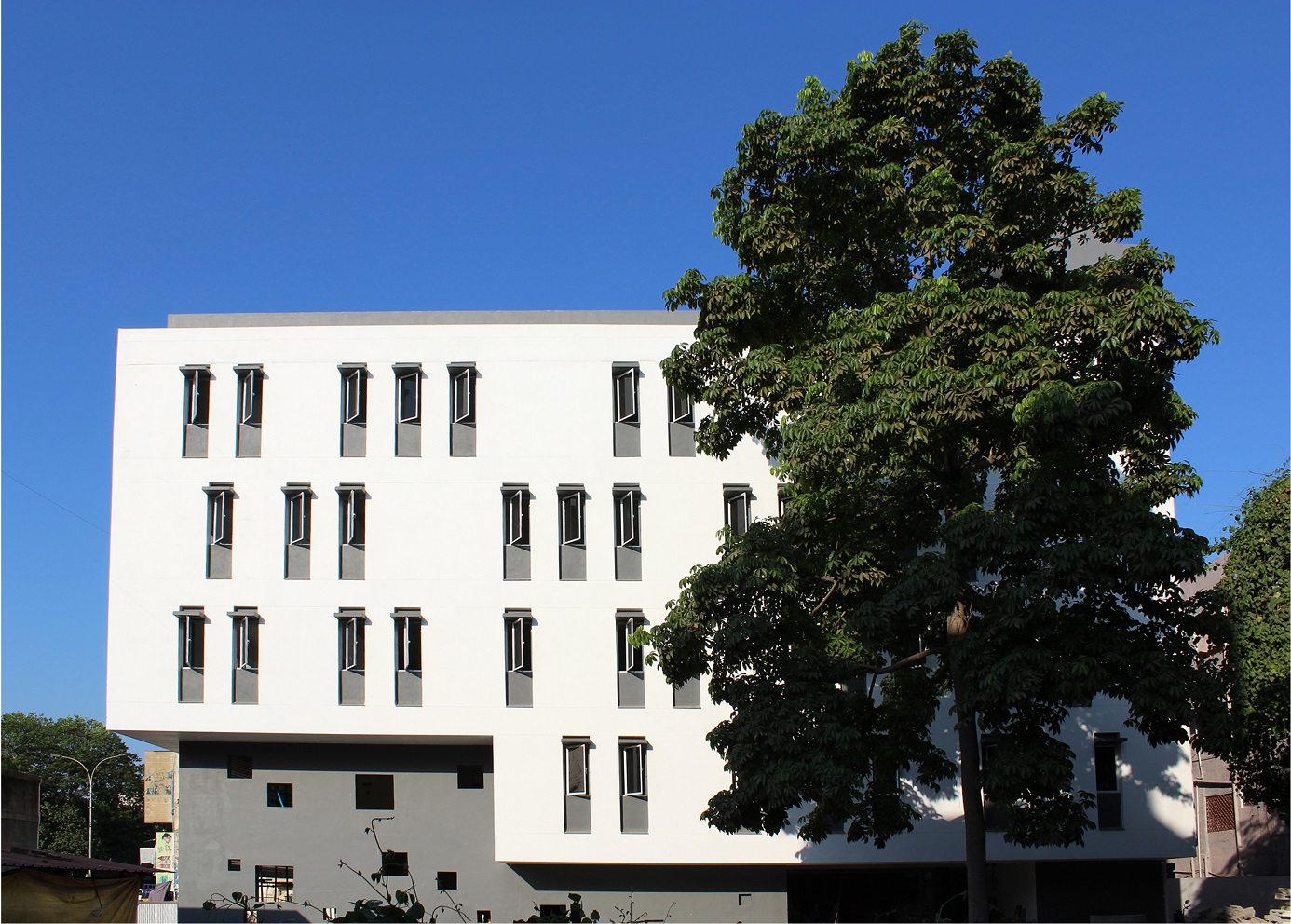
As of now, local governments hardly consider sustainability in the context of the construction industry. “If they incentivise sustainable buildings, our cities will become much better places,” he concludes.
You May Also Like: Photo Story: 7 Unique Indian Buildings That Won the Biggest Award in Architecture!
Arcot Plaza demonstrates that sustainable buildings can be a win-win for all concerned, and that the scale or budget needn’t put the brakes on for such ventures. One hopes that it inspires more such developments on the cityscape. After all, sustainability is smart.
(Edited by Shruti Singhal)
Like this story? Or have something to share?
Write to us: [email protected].
Connect with us on Facebook and Twitter.
This story made me
- 97
- 121
- 89
- 167
Tell Us More
We bring stories straight from the heart of India, to inspire millions and create a wave of impact. Our positive movement is growing bigger everyday, and we would love for you to join it.
Please contribute whatever you can, every little penny helps our team in bringing you more stories that support dreams and spread hope.






